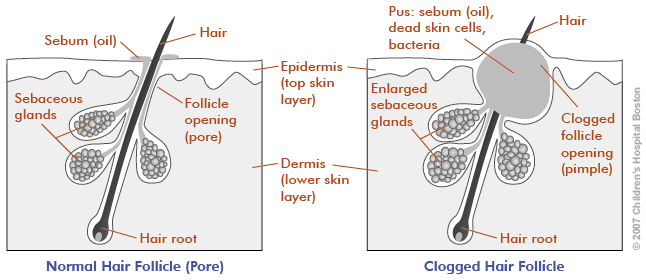Human hair follicles produce small amounts of hydrogen peroxide

Human Hair Follicles and Hydrogen Peroxide

Human hair is an intricate and fascinating structure, consisting of various components that determine its appearance, strength, and color. One lesser-known fact about hair relates to the natural production of hydrogen peroxide by hair follicles. Although it may sound surprising, our hair follicles do produce small amounts of hydrogen peroxide.
Hydrogen peroxide (H2O2) is a compound composed of hydrogen and oxygen. It is widely recognized for its oxidizing properties and is commonly used as a bleaching agent for hair and other materials. However, in the context of hair follicles, the presence of hydrogen peroxide is a natural occurrence that plays a role in the aging and graying of hair.
To understand why hair turns gray, we need to delve into the biology behind it. Each hair follicle contains specialized cells called melanocytes, which are responsible for producing melanin. Melanin is the pigment that gives our hair, skin, and eyes their distinct color. There are two types of melanin: eumelanin, which produces dark colors like brown or black, and pheomelanin, which produces lighter colors like blonde or red.

As we age, our melanocytes gradually produce less melanin. This decrease in melanin production is attributed to the accumulation of hydrogen peroxide in the hair follicles. Researchers have found that hydrogen peroxide can interfere with the enzyme called catalase, which normally breaks down hydrogen peroxide into water and oxygen. When catalase is inhibited, hydrogen peroxide builds up within the follicles, disrupting melanin production.
The accumulation of hydrogen peroxide leads to oxidative stress on the melanocytes, causing them to produce less melanin. As a result, the hair strands that grow from these follicles are no longer colored, appearing gray or white instead. It’s important to note that the graying process is gradual, and different individuals may experience it at varying rates.
Interestingly, studies have indicated that individuals with prematurely graying hair tend to have higher levels of hydrogen peroxide in their hair follicles. However, the exact factors that contribute to this phenomenon are still under investigation. It is believed that both genetic and environmental factors play a role in determining when and how quickly hair grays.
It’s worth mentioning that hydrogen peroxide’s presence is not limited to hair graying alone. It has also been associated with hair loss as an increase in oxidative stress within the hair follicles may influence hair growth cycles. However, further research is necessary to fully understand these effects.
In conclusion, human hair follicles do produce small amounts of hydrogen peroxide, which contributes to the graying of hair as we age. This natural occurrence involves the buildup of hydrogen peroxide within the follicles, leading to a decrease in melanin production by melanocytes. Understanding the mechanisms behind hair graying can shed light on the complex processes occurring within our bodies and help us appreciate the intricacies of human biology.
Source: Library of Congress - Everyday Mysteries
Tags
Share
Related Posts
Quick Links
Legal Stuff

